
Ayushi
MemberForum Replies Created
-
-
::
When speaking with an interviewer during a job interview, it’s important to convey professionalism, confidence, and effective communication skills. Here are some tips on how to speak with an interviewer:
Be polite and respectful: Begin the interview by greeting the interviewer with a firm handshake (if it’s an in-person interview) and a warm smile. Address them by their name and use polite language throughout the conversation.
Listen actively: Pay close attention to the interviewer’s questions and listen carefully to ensure you understand what they’re asking. Take a moment to gather your thoughts before responding.
Answer questions concisely and clearly: When responding to questions, be concise and provide relevant information. Focus on the key points and avoid rambling or going off on tangents. Use clear and simple language to express your thoughts.
Provide specific examples: When discussing your skills, experiences, and achievements, try to back up your statements with specific examples. This helps demonstrate your abilities and makes your answers more impactful.
Be confident but humble: Project confidence in your responses, but also be humble and acknowledge areas where you may have limited experience or knowledge. It’s okay to admit when you don’t know something, but express a willingness to learn and grow.
Use positive body language: Maintain good eye contact, sit up straight, and use open and friendly body language. Avoid crossing your arms or displaying signs of nervousness, such as fidgeting excessively.
Ask thoughtful questions: Towards the end of the interview, the interviewer will typically ask if you have any questions. Take this opportunity to ask thoughtful questions about the company, the role, or any other relevant aspects. This shows your interest and engagement.
Practice beforehand: It can be helpful to practice common interview questions beforehand, either by yourself or with a friend or family member. This can improve your confidence and help you articulate your thoughts more effectively.
-
::
Mathematics plays a significant role in our education beyond academics. Here are a few ways in which mathematics is relevant in various aspects of our lives:
-
Problem-solving skills: Mathematics teaches us how to approach problems logically, analyze information, and find solutions. These problem-solving skills are valuable in many areas of life, such as decision-making, critical thinking, and everyday challenges.
-
Quantitative reasoning: Mathematics develops our ability to reason quantitatively, enabling us to understand and interpret numerical information. This skill is essential in fields like finance, economics, statistics, and data analysis.
-
Financial literacy: Basic mathematical knowledge is crucial for managing personal finances, budgeting, understanding interest rates, calculating discounts, and making informed financial decisions. It helps individuals develop financial literacy and become more responsible with money.
-
Logical reasoning and deduction: Mathematics trains our minds to think logically, make deductions, and draw conclusions based on evidence and patterns. These skills are transferable to various domains, including problem-solving, scientific research, computer programming, and legal reasoning.
-
Analytical skills: Mathematics fosters analytical thinking by encouraging us to break down complex problems into smaller, more manageable components. Analytical skills are valuable in areas like engineering, computer science, business analysis, and research.
-
Pattern recognition: Mathematics helps us recognize patterns and relationships in data, which is relevant in fields such as data analysis, market research, and scientific discovery. Identifying patterns can lead to insights and advancements across various disciplines.
-
Technology and innovation: Mathematics is the foundation of many technological advancements and innovations. It underpins fields like computer science, artificial intelligence, cryptography, and data science. A strong mathematical background is often necessary to contribute to these rapidly evolving areas.
-
Everyday life and decision-making: Mathematics is present in our everyday lives, from calculating expenses, measuring ingredients for a recipe, and understanding probabilities and statistics, to interpreting charts and graphs in news articles. Mathematical literacy helps us make informed decisions and navigate the quantitative aspects of our world.
-
-
::
The Roman Empire was established in 27 BCE when Octavian, also known as Augustus, became the first Emperor of Rome. However, the process of Roman expansion and the transition from the Roman Republic to the Roman Empire was a gradual one that occurred over several centuries.
The Roman Republic was founded in 509 BCE after the overthrow of the Roman monarchy. For centuries, the Republic expanded its territory through military conquest and colonization. It gradually gained control over the Italian Peninsula and eventually expanded its influence across the Mediterranean region.
By the 1st century BCE, the Roman Republic had become a powerful state, but it faced internal conflicts and political instability. One of the most significant events leading to the establishment of the Roman Empire was the civil war between Julius Caesar and his political opponents, including the Roman Senate. Julius Caesar emerged victorious and was appointed as “dictator perpetuo” (dictator in perpetuity) in 45 BCE, effectively consolidating power in his hands.
Julius Caesar’s assassination in 44 BCE created a power vacuum, which led to a struggle for control among his supporters and the senatorial faction. Octavian, Julius Caesar’s adopted son and heir, emerged as one of the key figures in this power struggle. He formed a political alliance with Mark Antony, a prominent general and supporter of Julius Caesar.
In 31 BCE, Octavian and Antony defeated their rivals in the Battle of Actium, establishing their dominance over the Roman world. In the following years, Octavian skillfully consolidated his power and gradually transformed the political system of Rome. In 27 BCE, the Roman Senate granted him the honorary title of “Augustus,” meaning “the revered” or “the exalted,” effectively marking the beginning of the Roman Empire.
Augustus ruled as the first Emperor of Rome until he died in 14 CE. Under his leadership, the Roman Empire experienced a period of relative stability and prosperity known as the Pax Romana (Roman Peace). Subsequent emperors continued to expand the empire’s territories, reaching its greatest extent under Emperor Trajan in the 2nd century CE.
Overall, the establishment of the Roman Empire was a complex process that involved a combination of military conquest, political maneuvering, and the transformation of the Roman political system. It marked a significant shift in the governance and organization of the Roman state, leading to centuries of imperial rule.
-
::
Essays and blogs are both forms of written expression, but they differ in several key aspects, including their purpose, structure, tone, and intended audience.
-
Purpose: Essays are typically written to inform, persuade, or analyze a specific topic in a formal and structured manner. They often aim to provide a comprehensive and well-researched exploration of a subject. Blogs, on the other hand, are more informal and conversational. They often serve as a platform for individuals to express personal opinions, share experiences, or provide commentary on various topics.
-
Structure: Essays generally follow a formal structure with an introduction, body paragraphs, and a conclusion. They typically include a clear thesis statement, supporting evidence, and logical transitions between ideas. Blogs tend to have a more flexible structure. They can vary in length, and the organization may be less rigid. Blogs often include headings, bullet points, or subheadings to make the content more scannable and accessible.
-
Tone: Essays generally adopt a formal and objective tone. They rely on evidence, logical arguments, and academic language to convey information or make a point. Blogs, on the other hand, have a more conversational and subjective tone. They often incorporate personal anecdotes, informal language, and a sense of authorial voice. Blogs may also include elements such as humor or storytelling to engage readers.
-
Intended Audience: Essays are usually written for a specific academic audience. They aim to contribute to the existing body of knowledge on a particular subject and are often submitted as assignments or published in academic journals. Blogs, on the other hand, have a broader and more diverse audience. They can be accessed by anyone with internet access and can target a specific niche or a general readership.
-
Publication Medium: Essays are commonly published in academic journals, books, or other scholarly publications. They undergo a rigorous review process and adhere to specific citation and formatting styles. Blogs, on the other hand, are typically published online on personal or professional websites, social media platforms, or dedicated blogging platforms. They can be easily updated or modified by the author and often allow for reader engagement through comments.
-
-
::
The formula for the present continuous tense, also known as the present progressive tense, is:
[Subject] + [be verb (am/is/are)] + [present participle (verb + -ing)]
Here’s the breakdown:
- Subject: This is the person or thing that is acting.
- Be verb: The appropriate form of the verb “be” (am, is, or are) is used based on the subject.
- Present participle: The base verb is used with the suffix “-ing” added to it.
-
::
The human heart is an extraordinary organ that plays a vital role in sustaining life. Situated within the chest, slightly to the left, the heart is a muscular pump responsible for circulating oxygenated blood to all parts of the body. In this essay, we will explore the structure, functions, and significance of the human heart.
The structure of the human heart is intricate and specialized. It is divided into four chambers: two atria and two ventricles. The atria receive blood returning to the heart, while the ventricles pump blood out to the body. The heart is enclosed in a protective sac called the pericardium and is composed of cardiac muscle tissue, which is capable of continuous rhythmic contractions.
The primary function of the heart is to pump blood throughout the body, ensuring the delivery of oxygen and nutrients to cells and the removal of waste products. The heart achieves this through a process known as circulation. Deoxygenated blood enters the right atrium from the body and is then pumped into the right ventricle. From there, it is sent to the lungs where it receives oxygen and gets rid of carbon dioxide. Oxygenated blood returns to the heart through the left atrium and is subsequently pumped into the left ventricle, which then propels it to the rest of the body through the aorta.
Besides its role in the circulatory system, the heart holds great symbolism. It has long been associated with emotions and is considered the seat of love and courage. It is often used metaphorically to represent the essence of a person’s character or their emotional state. The heart’s rhythmic beating is also a constant reminder of life’s fleeting nature and the preciousness of every moment.
In conclusion, the human heart is a remarkable organ with a complex structure and essential functions. Its ceaseless pumping sustains life by ensuring the circulation of oxygenated blood throughout the body. Beyond its physiological importance, the heart holds deep symbolic significance, representing love, courage, and the transient nature of existence. Understanding and appreciating the intricacies of the human heart can foster a greater awareness of the marvels of our own bodies and the fragility of life.
-
::
My knowledge cutoff is in September 2021, so I don’t have the specific details regarding the Commonwealth Games in 2022. I recommend checking reliable sources such as official Commonwealth Games websites or sports news outlets for the most up-to-date information on India’s medal tally in the 2022 Commonwealth Games.
-
::
Introduction:
Harvest Festival, also known as the Thanksgiving Festival or the Harvest Home, is a joyous celebration that commemorates the culmination of the agricultural season. It is a time when communities come together to express gratitude for the bountiful harvest and to celebrate the abundance of nature’s gifts. This essay explores the significance, traditions, and cultural variations of Harvest Festivals across different regions of the world.
Historical Significance:
The tradition of celebrating the harvest can be traced back to ancient times when agricultural societies depended on the success of their crops for survival. Harvest Festivals were an opportunity for people to express their appreciation to the gods or deities believed to be responsible for the fertility of the land. These festivals not only served as religious ceremonies but also provided a sense of community cohesion and social bonding.
Traditions and Customs:
Harvest Festivals are characterized by a variety of customs and rituals that vary from region to region. In many cultures, the festivities commence with a harvest procession, where people march through the fields, accompanied by music and dance, to symbolize the gathering of crops. This procession often culminates in a central location where the community assembles to give thanks.
One of the most prominent customs during Harvest Festivals is the decoration of homes and public spaces with agricultural produce, such as corn, wheat, fruits, and vegetables. These colorful displays serve as a visual representation of the abundance of the harvest and are a source of joy and admiration for all. Additionally, feasting is a central aspect of Harvest Festivals, where families and friends gather to enjoy a lavish meal prepared with the freshly harvested produce.
Cultural Variations:
Harvest Festivals are celebrated in various parts of the world, each with its unique cultural nuances. In the United States and Canada, Thanksgiving is a widely observed Harvest Festival that traces its roots to the pilgrims’ harvest feast in Plymouth in 1621. It is a time when families come together to express gratitude for blessings received and to share a traditional meal featuring roasted turkey, cranberry sauce, and pumpkin pie.
In India, the Harvest Festival is known as Pongal or Makar Sankranti, celebrated in mid-January. It is a four-day-long festival that pays homage to the sun god and marks the transition of the sun into the zodiac sign of Capricorn. People prepare a special dish called Pongal, made from newly harvested rice and lentils, and offer prayers for a prosperous year ahead.
In Europe, the Harvest Festival is celebrated with unique customs. In the United Kingdom, the festival is often associated with the Harvest Queen, who is crowned during the festivities. The celebration includes processions, traditional dances, and the donation of food to those in need. In Germany, the Erntedankfest (Thanksgiving Festival) involves parades, church services, and the creation of harvest crowns or wreaths.
Conclusion:
Harvest Festivals hold immense cultural and social significance as they provide an opportunity for communities to come together, express gratitude, and celebrate the fruits of their labor. These festivals are a reminder of the interdependence between humans and nature and highlight the importance of sustainable agricultural practices. As we continue to face environmental challenges and food security concerns, Harvest Festivals serve as a timely reminder to appreciate and protect the earth’s resources. By fostering a spirit of gratitude and unity, Harvest Festivals contribute to the overall well-being of societies and promote a deeper connection with nature.
-
::
Republic Day: Celebrating Democracy and National Pride
Republic Day is a significant national celebration observed in many countries around the world, commemorating the establishment of a republic, where the supreme power lies with the people. This essay explores the essence and importance of Republic Day, focusing on India’s Republic Day as an example.
Republic Day in India holds great historical and cultural significance. It is celebrated on the 26th of January each year, marking the day when the Constitution of India came into effect in 1950. This event marked India’s transition from a constitutional monarchy to a democratic republic, proclaiming the nation as a sovereign, socialist, secular, and democratic republic.
The celebrations of India’s Republic Day are grand and elaborate. The main event takes place in the capital city, New Delhi, at Rajpath, where the President of India hoists the national flag and pays homage to the martyrs. The event is attended by political leaders, foreign dignitaries, and thousands of citizens. The highlight of the festivities is the vibrant parade showcasing India’s cultural diversity, military prowess, technological advancements, and social achievements.
The parade features various contingents from the armed forces, along with displays of tanks, missiles, and other military equipment. The different states and union territories of India showcase their cultural heritage through floats, folk dances, traditional costumes, and music. The event also includes performances by school children, showcasing their talents and patriotism.
Republic Day serves as a reminder of India’s hard-fought struggle for independence and the commitment to democratic principles. It is a day to reflect on the values enshrined in the Constitution, such as justice, equality, liberty, and fraternity. The celebrations instill a sense of national pride and unity among citizens, transcending regional, linguistic, and cultural differences.
Beyond India, Republic Day celebrations are observed in other countries that have adopted a republican form of government. These celebrations vary in their customs and traditions but share the common objective of honoring the principles of democracy and citizen empowerment.
In conclusion, Republic Day is a momentous occasion that symbolizes the triumph of democracy and the aspirations of a nation. It is a day to honor the constitution, pay homage to the founding fathers, and celebrate the values of freedom, justice, and equality. Republic Day serves as a reminder of the collective responsibility to safeguard and uphold the principles of democracy, both in India and around the world.
-
::
The father of Indian cinema is Dadasaheb Phalke. He is often referred to as the “father of Indian cinema” because he made India’s first full-length feature film, “Raja Harishchandra,” which was released in 1913. Dadasaheb Phalke’s contributions to Indian cinema were pioneering and laid the foundation for the growth and development of the Indian film industry.
-
::
Introduction (100 words):
Pollution is the presence or introduction of substances or contaminants into the environment that cause adverse effects on living organisms and their surroundings. It is a global concern that poses significant threats to the well-being of our planet and its inhabitants. Pollution can take various forms, affecting different aspects of our ecosystem. This essay will explore the different types of pollution, their causes, and the potential consequences they have on the environment and human health.Air Pollution (100 words):
Air pollution refers to the contamination of the air with harmful substances, including gases, particulate matter, and biological molecules. It is primarily caused by human activities such as burning fossil fuels, industrial emissions, vehicle exhaust, and agricultural practices. The pollutants released into the air, such as carbon monoxide, sulfur dioxide, nitrogen oxides, and particulate matter, have detrimental effects on human health, leading to respiratory problems, cardiovascular diseases, and even premature death. Additionally, air pollution contributes to climate change and damages ecosystems, affecting plants, animals, and natural habitats.Water Pollution (100 words):
Water pollution occurs when contaminants are introduced into water bodies, such as rivers, lakes, oceans, and groundwater, making it unsafe for plants, animals, and humans. Sources of water pollution include industrial waste, sewage discharge, agricultural runoff, oil spills, and improper disposal of chemicals. The pollutants, such as heavy metals, pesticides, fertilizers, and pathogens, contaminate the water, leading to the destruction of aquatic ecosystems and a threat to biodiversity. Moreover, the consumption of polluted water can cause severe health issues, including gastrointestinal problems, infections, and long-term diseases.Soil Pollution (100 words):
Soil pollution refers to the degradation of soil quality due to the presence of pollutants. It occurs when harmful substances, such as industrial waste, chemicals, pesticides, and improper disposal of solid waste, are introduced into the soil. Soil pollution affects soil fertility, inhibiting plant growth and agricultural productivity. The contaminants can also seep into groundwater, further polluting water sources. Soil pollution not only affects food production but also poses risks to human health through the consumption of contaminated crops and exposure to toxic substances.Noise Pollution (100 words):
Noise pollution is the excessive or disruptive sound that disturbs the natural balance of the environment. It is caused by various sources, including transportation, industrial activities, construction, and loud music. Prolonged exposure to high noise levels can lead to hearing loss, stress, sleep disturbances, and impaired cognitive function. Noise pollution also affects wildlife, leading to behavioral changes, disruption of communication, and habitat displacement.Conclusion (100 words):
Pollution, in its various forms, poses significant challenges to our planet and its inhabitants. Air pollution, water pollution, soil pollution, and noise pollution all have detrimental effects on the environment, ecosystems, and human health. To combat this issue, collective efforts are required, including stricter regulations, the adoption of cleaner technologies, sustainable practices, and public awareness campaigns. It is crucial to prioritize the preservation and protection of our environment, as a healthy planet is essential for the well-being of present and future generations. Only through concerted action can we strive to mitigate pollution and create a cleaner, healthier, and sustainable world. -
::
Simple Present Tense: Used to describe habitual actions, general truths, or facts.
Example: (i) I walk to work every day.
(ii) Cats are mammals.
Present Continuous/Progressive Tense: Used to describe actions that are happening at the moment of speaking or ongoing actions.
Example: (i) She is reading a book right now.
(ii) They are playing soccer in the park.
Simple Past Tense: Used to describe actions that happened and were completed in the past.
Example: (i) We visited Paris last summer.
(ii) He ate dinner an hour ago.
Past Continuous/Progressive Tense: Used to describe actions that were in progress at a specific time in the past.
Example: (i) She was studying when I called her.
(ii) They were watching a movie last night.
Present Perfect Tense: Used to describe actions that happened at an indefinite time in the past or have a connection to the present.
Example: (i) I have visited Italy before.
(ii) They have finished their homework.
Past Perfect Tense: Used to describe actions that were completed before another past action or a specific time in the past.
Example: (i) She had already left when I arrived.
(ii) They had finished dinner before the guests arrived.
Future Simple Tense: Used to describe actions that will happen in the future.
Example: (i) We will meet tomorrow.
(ii) She will start her new job next week.
Future Continuous/Progressive Tense: Used to describe ongoing actions that will be happening at a specific time in the future.
Example: (i) They will be flying to London at 8 PM tomorrow.
(ii) I will be waiting for you at the airport.
Future Perfect Tense: Used to describe actions that will be completed before a specified time or another future action.
Example: (i) By next year, he will have graduated from college.
(ii) They will have finished the project by Friday.
These examples provide a general understanding of the different tenses in English.
-
::
AI has made significant advancements and continues to evolve rapidly, but certain limitations may persist even in the future. Here are a few areas where it is currently believed that AI may face challenges in achieving human-like capabilities:
-
Consciousness and Self-Awareness: AI systems are based on algorithms and computational processes, and they lack subjective experience or consciousness as humans understand it. It remains a philosophical and scientific question whether AI can possess genuine self-awareness.
-
Emotional Intelligence: While AI can analyze and process emotions to some extent, replicating the depth and complexity of human emotions is a significant challenge. AI may struggle with understanding emotions in nuanced social contexts and displaying genuine empathy.
-
Common Sense Reasoning: AI models excel at specific tasks when provided with sufficient training data, but they often lack the general knowledge and common sense reasoning that humans possess. AI systems can struggle with comprehending subtle contexts or making intuitive judgments that humans find relatively straightforward.
-
Creativity and Originality: AI can generate content, such as art, music, and text, based on patterns and existing data. However, truly original and groundbreaking creative work often involves novel ideas, inspiration, and subjective interpretations that may be difficult for AI systems to replicate.
-
Moral and Ethical Reasoning: AI systems are designed to follow predefined rules and optimize specific objectives. However, making complex ethical decisions that involve contextual understanding, moral reasoning, and subjective judgment is challenging for AI. Determining the “right” course of action in morally ambiguous situations remains a domain where human judgment is crucial.
-
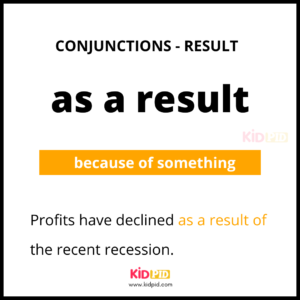 Conjunctions in English
Conjunctions in English 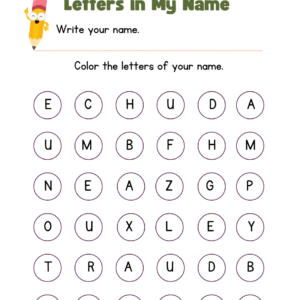 Letter in My Name Worksheet
Letter in My Name Worksheet 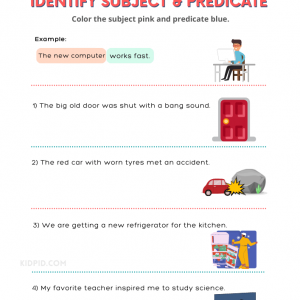 Identify Subject and Predicate Free Printable Worksheets for Grade 2
Identify Subject and Predicate Free Printable Worksheets for Grade 2  American Sign Language Flashcards
American Sign Language Flashcards 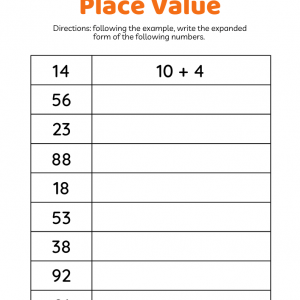 Math Expanded Form Worksheets for Grade 1
Math Expanded Form Worksheets for Grade 1  Matching Numbers Christmas Activity Worksheet
Matching Numbers Christmas Activity Worksheet 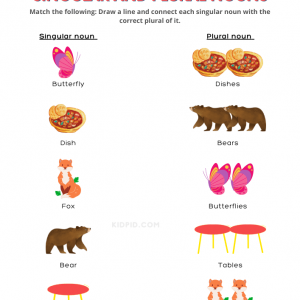 Match Singular and Plural Nouns Printable Worksheets for Grade 1
Match Singular and Plural Nouns Printable Worksheets for Grade 1 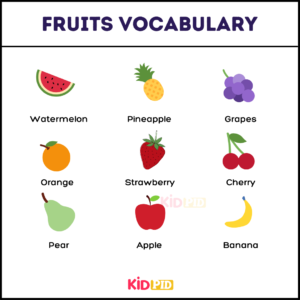 Fruits Name With Pictures
Fruits Name With Pictures 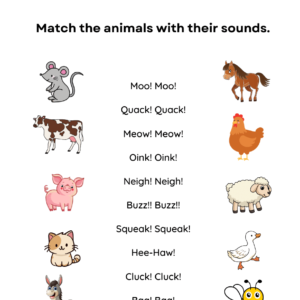 Animal Sound Match Worksheet
Animal Sound Match Worksheet 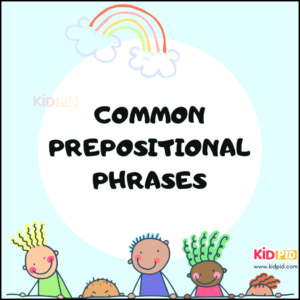 Common Prepositional Phrases
Common Prepositional Phrases  Place Value Worksheets for Grade 1
Place Value Worksheets for Grade 1 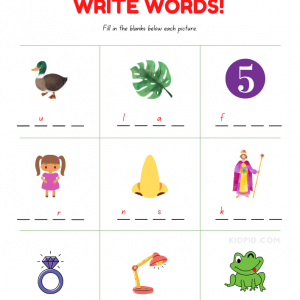 Write 4 Letter Words Worksheet for Grade 1
Write 4 Letter Words Worksheet for Grade 1 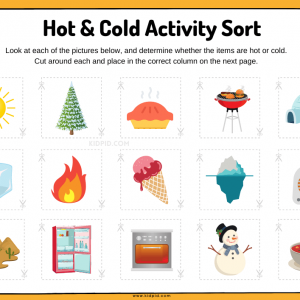 Hot and Cold Activity Sort Worksheets
Hot and Cold Activity Sort Worksheets 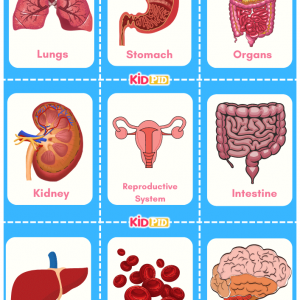 Human Major Organs Flashcards
Human Major Organs Flashcards